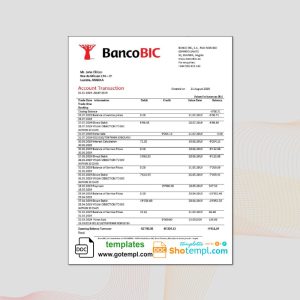A bank proof of address statement is a document issued by a financial institution that confirms the residential address of an account holder. It is an important document that is often required for a variety of purposes, such as opening a new account, applying for a loan, or verifying identity.

A proof of address statement typically contains the account holder’s name, address, and account number, as well as the date of issuance and the bank’s official seal or stamp. It is usually printed on the bank’s letterhead and signed by a bank official.
To obtain a proof of address statement, an account holder must first contact their bank and request one. Depending on the bank’s policies, this may involve visiting a branch in person, submitting a request online, or calling the bank’s customer service hotline.
It is important to ensure that the address on the proof of address statement is up to date and accurate, as any discrepancies may result in delays or rejection of applications. Account holders should also take note of the validity period of the document, as some institutions may require a statement that is no older than three months.
While a bank proof of address statement is a useful document, it is not the only form of proof of address that may be accepted by various institutions. Other documents that may be accepted include utility bills, government-issued ID cards, and tax documents. It is always advisable to check with the relevant institution regarding their specific requirements.
In conclusion, a bank proof of address statement is an important document that is required for many financial transactions. Account holders should ensure that their address details are up to date and accurate, and keep in mind the validity period of the document. It is also worth noting that other forms of proof of address may be accepted by different institutions, and it is always best to check their specific requirements.
